
Imam Mohammed Bin Saud, the founder of the First Saudi State, relied on counsel ( Shura ) in various affairs. He often sought the advice of his son, Abdulaziz, in managing the affairs of Diriyah , the capital of the First Saudi State . During the reign of Imam Abdulaziz, the boundaries of the Saudi State expanded, imposing further burdens in terms of governing the state and its affairs. Hence, the Imam sought the counsel of the governors among his family members, scholars, and opinion-holders. ...
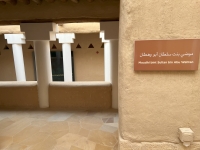
Modhi Bint Sultan Bin Abi Wahtan was the wife of Imam Mohammad Bin Saud, the founder of the First Saudi State , and the mother of his four children: Abdulaziz, Saud, Abdullah, and Faisal. She belongs to the al-Kathir family, a branch of the al-Fadl family, who ruled parts of the Arabian Peninsula between the 14th and 17th centuries. Works of Modhi Bint Abi Wahtan Modhi Bint Abi Wahtan took care of knowledge and education, and she also focused on charitable endowments. She has a well-known endow...
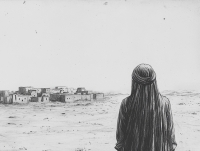
Modhi Saad al-Dahlawi is a Saudi poetess who lived during the First Saudi State , which lasted from 1727 to 1818. She wrote about pride, honor, and enthusiasm. Life of Modhi al-Dahlawi Modhi al-Dahlawi's father ruled the Emirate of al-Rass from 1766-1815, succeeding her ancestors who had ruled al-Rass in the 12th century and the early 13th century AH. Her father was one of the supporters and defenders of the First Saudi State. She married one of the leaders of the Anza tribe, Jidaa' B...
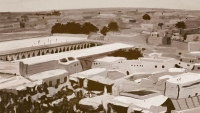
Social Life in the First Saudi State refers to the social phenomena that were observed within the First Saudi State and the regions it governed. These aspects encompass traditions and customs, relationships among community members, public and private celebrations, culture and language, and economic activities in which the population was engaged. Culture and language in the First Saudi State The Arabic language was the most common language used in the First Saudi State. However, it was impacted ...
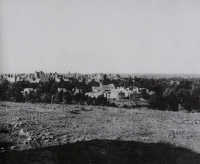
Al-Bujairi District in Diriyah during the era of the First Saudi State was a center of knowledge and scholars, and a destination for students of knowledge. At that time, they formed a supportive and reformist community, addressing the problems of society, fulfilling its needs, and focusing on education by holding gatherings and educational lessons. Some of the scholars of the First Saudi State include: Mohammad Bin Abdulwahhab Mohammad Bin Abdulwahhab was born in Uyaynah and grew up there. Amon...
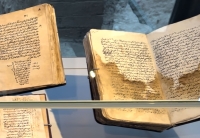
Historians from within the state and travelers who visited its regions documented the history of the First Saudi State and the eras of its Imams, contributing to the preservation of the history, civilization, and culture of the Kingdom of Saudi Arabia . The historians’ documentation was akin to historical records, as they mentioned events and occurrences according to the years. As for the Orientalists and travelers, they visited the regions of the First Saudi State and shared their observatio...
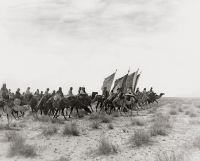
Carrying al-Bayraq (banner) was a well-established tradition in the Saudi states, from the First and Second Saudi States to the Kingdom of Saudi Arabia . It was entrusted to distinguished men in the state. Among those who carried it were: - Ibrahim Bin Tuq from al-Tuq family, Al-Mu’amera, residents of Diriyah . He was the first to carry the banner in the First Saudi State. Imam Abdulaziz Bin Mohammad Bin Saud, the second ruler of the First Saudi State, and his son, Imam Saud, would desi...

Women's garments in the First Saudi State refers to the clothing worn by women during the era of the First Saudi State , which was characterized by its various colors, designs, and fabrics, depending on each region. Garments can be divided based on their style and the environment from which they originated according to the five main regions in the First Saudi State: the central region, the eastern region, the western region, the southern region, and the northern region. Women's garmen...
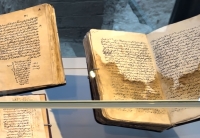
Manuscripts in Najd were scientific mediums used in the region during the era of the First and Second Saudi States. They served as a key component of the thriving intellectual movement at the time, prompting scholars, readers, and copyists in Najd to actively preserve and circulate knowledge through manuscripts, ensuring their continued benefit. The Importance of Manuscripts in Najd During the First and Second Saudi States, the people of Najd recognized the significance and value of manuscripts...
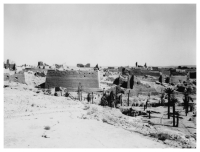
Women in the First Saudi State are every woman who contributed to the establishment and development of the First Saudi State , playing influential roles in building their society. They actively participated in culture, poetry, trade, and education. They were known for their courage, generosity, patience, and wisdom in managing affairs, as well as their dedication to charitable work. Women’s Education in the First Saudi State The imams of the First Saudi State were keen on educating women and ...
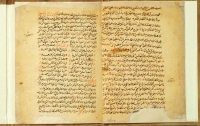
Astronomy in the First Saudi State is a science that became intrinsically linked to the society of the Arabian Peninsula since the establishment of the First Saudi State . In fact, due to the environmental conditions prevailing during that period, people's interest grew in astronomical calculations and following the lunar phases and associated climatic changes, including winds, rains, cold, and heat, as well as their aftermath, whether drought or subsequent fertility, where they adapted th...
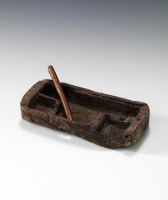
Writing Instruments in the First Saudi State are the writing instruments used before and during the establishment of the First Saudi State . In Najd, the nucleus of the state, writing instruments were similar to those used by humans when they first started writing. Traditional writing instruments found in Najd were made of raw materials available within the local environment. They were simple instruments, including, writing tablets, pens, and inkpots. Making writing instruments in the First Sau...